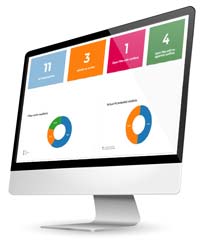Conflicts of interest in the workplace can be difficult to pin down, and can cause significant confusion in terms of knowing what to report, when and how. We recommend taking these key steps in order to form comprehensive conflicts of interest reporting system.
Reporting conflicts of interest in the workplace
Reporting conflicts of interest in the workplace is an essential practice for maintaining a transparent and ethical working environment. A conflict of interest can arise when an employee’s personal interests or relationships interfere with their ability to perform their duties impartially. Examples of conflicts of interest can include accepting gifts or favours from clients, having a financial interest in a supplier or competitor, or having a close personal relationship with a colleague. By promptly reporting any potential conflicts of interest, employees can help their organisation to identify and address these issues before they can cause harm to the organisation’s reputation or legal standing. It is essential that all employees are aware of their responsibility to report any conflicts of interest and understand the consequences of failing to do so. A robust reporting process can ensure that conflicts of interest are identified and resolved in a timely and appropriate manner.
Key steps in conflicts of interest reporting system
Conflicts of interest in the workplace can be difficult to pin down, and can cause significant confusion in terms of knowing what to report, when and how. We recommend taking these key steps in order to form a comprehensive conflicts of interest reporting system.
Have clear policies and procedures in place
- Define conflicts
- Train staff to understand and recognise them
- Have one conflicts policy to cover everyone
Have everyone renew their conflicts disclosure annually
- Even if they have nothing to add, form the habit
- Ensure senior staff and high-risk staff submit in real time
- Make it easy to submit and sign off on, i.e. make sure it is digital!
Really, have everyone participate
- Aim for 100% compliance in conflicts reporting
- Consider reward schemes for timely completion — anything to make it a habit
- Have a communications plan in place for reporting: don’t just send one email and forget about it!
Be transparent in conflicts reporting
- Ensure the process of what happens after ‘submit’ is as clear as possible
- Don’t punish staff for submitting a conflict
- Tie it into corporate messages around responsible and ethical behaviour
Track mitigation to make sure it happens
- Track mitigation measures to make sure it happens
- Be clear on who is involved in each mitigation measure, from management to the individual involved
- Track completion across the board, and be open about what mitigation measures are in place to encourage reporting
Conflicts of interest compliance solutions
An automated conflicts reporting tool that provides real-time updates to the compliance team can make a real difference when it comes to conflicts of interest reporting, and that’s exactly what Omnitrack–our centralised reporting and tracking tool–can provide.
We have two conflicts of interest solutions, for law firms and for workplaces. Both streamline the collection of data, securely and in one centralised location. Omnitrack allows for ongoing monitoring and tracking, providing relevant alerts throughout the process. A centralised dashboard enables the review all conflicts and aggregate data.
Conflicts of interest policy template
Our conflicts of interest policy template will facilitate the provision of information about conflicts of interest and will give employees a better understanding of their responsibilities.









